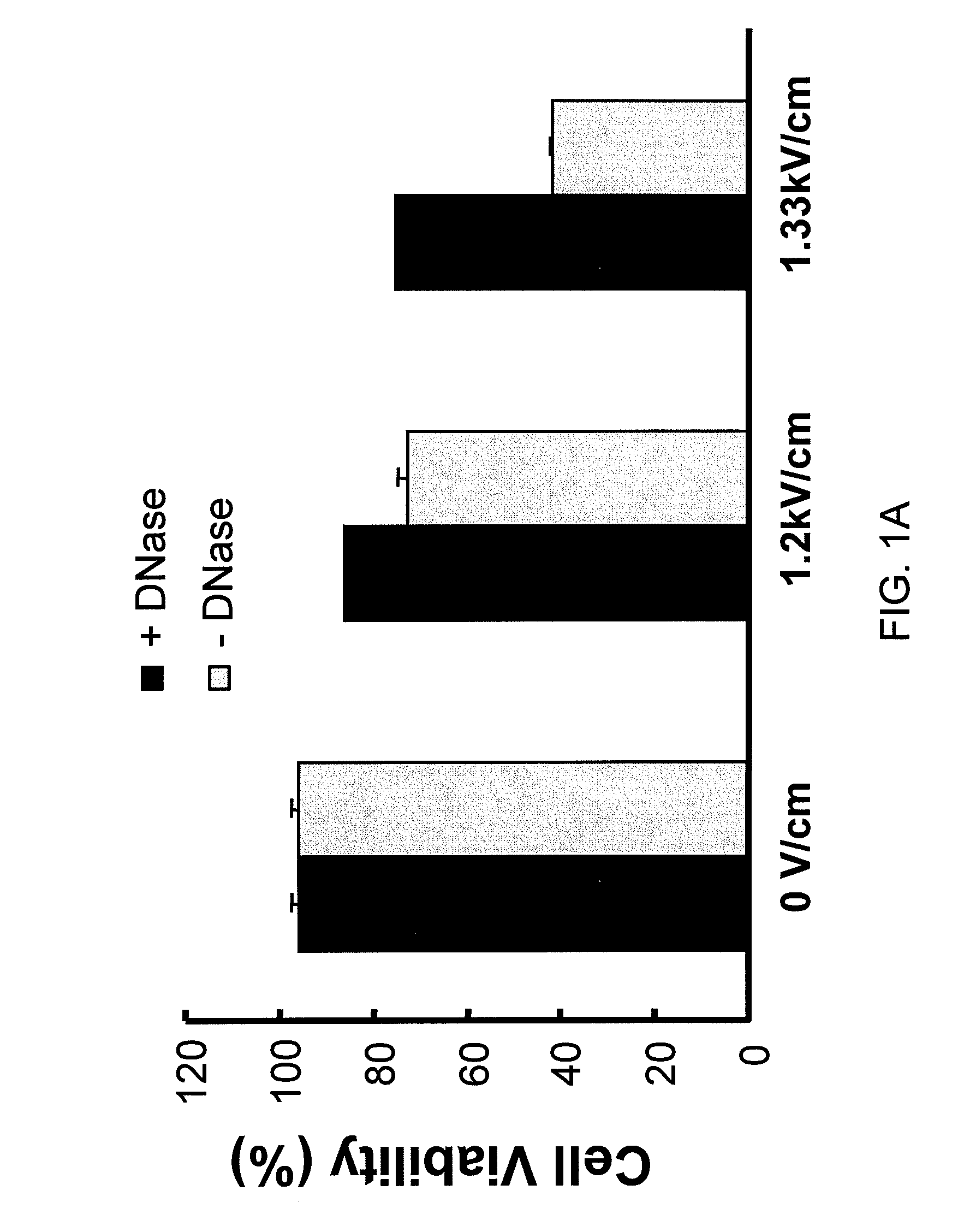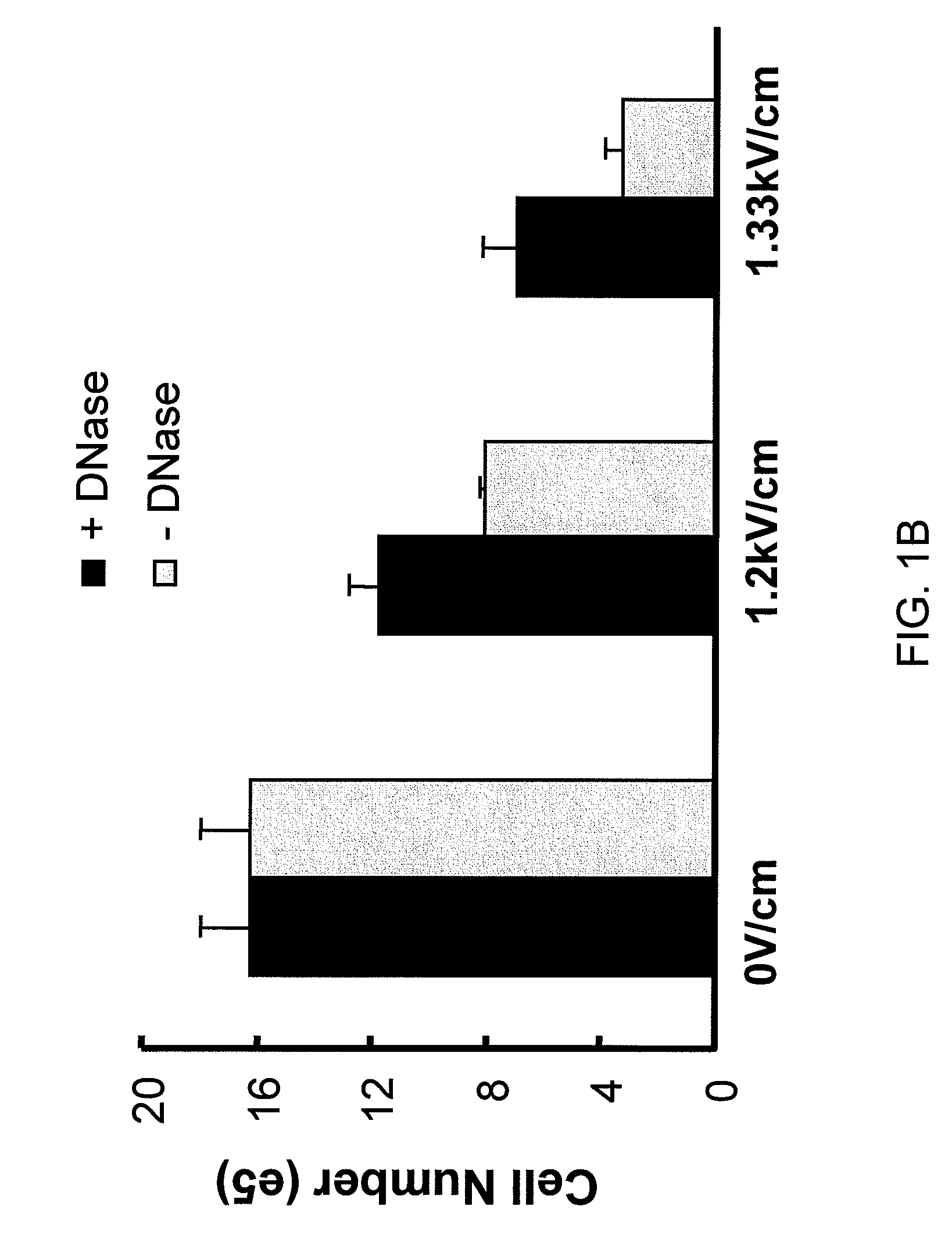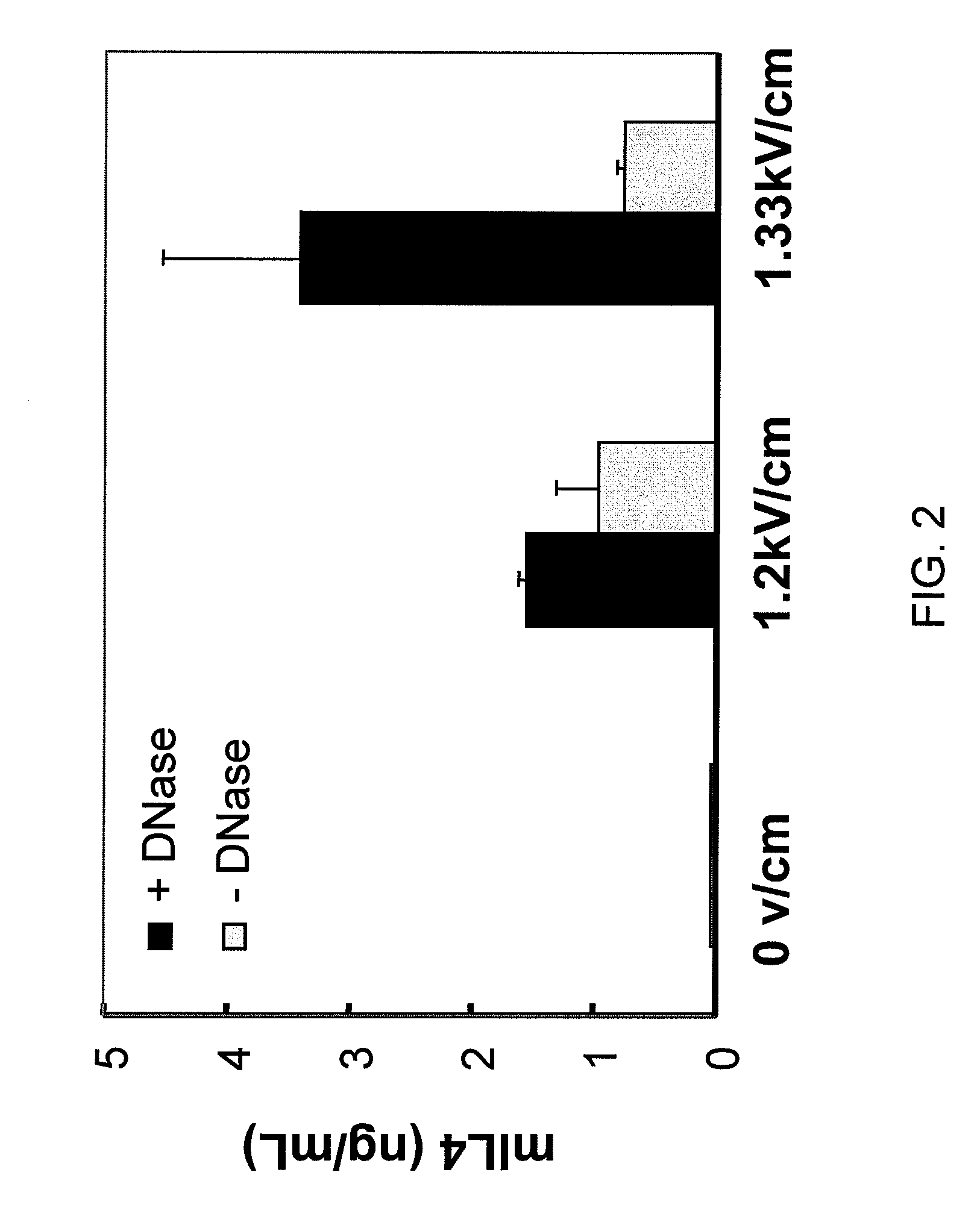Use of Nucleases to Improve Viability and Enhance Transgene Expression in Transfected Cells
a technology of transgene expression and nucleases, applied in the field of molecular biology, can solve the problems of necrosis and apoptosis of cells, obstacles to achieving efficient transfection, etc., and achieve the effects of enhancing and increasing the viability of the transfected cell
- Summary
- Abstract
- Description
- Claims
- Application Information
AI Technical Summary
Benefits of technology
Problems solved by technology
Method used
Image
Examples
example 1
DNase Treatment Improves Cell Viability and Transfection Efficiency in Jurkat Cells by Allowing the Cells to Tolerate Higher Input Electrical Energy
[0172] A DNase stock solution was prepared by reconstituting the lyophilized DNase in electroporation (EP) buffer at a concentration of 2000 U / mL. The DNase was added to the transfected cells in a ratio of 1 volume DNase stock solution to 1 volumes of transfected cells.
[0173] Jurkat cells were transfected with either the plasmid pTM2 (pCMV-eGFP on pCI backbone (Promega)) or pEF1α-mIL4 by electroporation at either 0 V / cm, 1.2, kV / cm, or 1.33 kV / cm at 500 ug / ml. DNase was added to the transfected cells in transfection buffer 4 minutes following electroporation. The cells were incubated in transfection buffer with the DNase for 20 minutes in a 37° C. water bath and then cultured in complete culture medium without removing the DNase (addition of the culture medium resulted in a dilution of the DNase concentration of about 50-100×).
[0174] ...
example 2
DNase Treatment Improves Cell Viability and Transfection Efficiency in Jurkat Cells by Allowing the Cells to Tolerate Higher DNA Concentrations
[0176] A DNase stock solution was prepared by reconstituting the lyophilized DNase in electroporation (EP) buffer at a concentration of 2000 U / mL. The DNase was added to the transfected cells in a ration of 1 volume DNase stock solution to 5 volumes of transfected cells.
[0177] Jurkat cells were transfected with the plasmid pCMV-eGFP by electroporation at 1.5 kV / cm. The plasmid was added at a concentration of 0 μg / ml, 50 μg / ml, 100 μg / ml, or 200 μg / ml. DNase was added to the transfected cells immediately following electroporation. The transfected cells were kept in the transfection buffer with the DNase for 20 minutes in a 37° C. water bath and then cultured in complete culture medium without removing the DNase (addition of the culture medium resulted in a dilution of the DNase concentration of about 50-100×).
[0178] Cells were stained with ...
example 3
Effect of Time Points for the DNase Treatment of Electroporated K562 Cells
[0179] A DNase stock solution was prepared by reconstituting the lyophilized DNase in electroporation (EP) buffer at a concentration of 2000 U / mL. The DNase was added to the transfected cells in a ration of 1 volume DNase stock solution to 10 volumes of transfected cells.
[0180] K562 cells were transfected with the plasmid pGEG-mIL-12 by electroporation at 1.5 kV / cm. The plasmid was added at a concentration of 175 μg / ml. DNase was added to the transfected cells at the time points indicated. The cells were incubated in transfection buffer with the DNase for 20 minutes in a 37° C. water bath and then cultured in complete culture medium without removing DNase (final DNase concentration in culture medium was diluted 50-100×).
[0181] As shown in FIG. 5, adding the DNase to the cells 2 minutes prior to or during (−0′) electroporation resulted in undetectable transgene expression of mIL-12, presumably due to the deg...
PUM
| Property | Measurement | Unit |
|---|---|---|
| concentration | aaaaa | aaaaa |
| concentration | aaaaa | aaaaa |
| concentration | aaaaa | aaaaa |
Abstract
Description
Claims
Application Information
 Login to View More
Login to View More - R&D
- Intellectual Property
- Life Sciences
- Materials
- Tech Scout
- Unparalleled Data Quality
- Higher Quality Content
- 60% Fewer Hallucinations
Browse by: Latest US Patents, China's latest patents, Technical Efficacy Thesaurus, Application Domain, Technology Topic, Popular Technical Reports.
© 2025 PatSnap. All rights reserved.Legal|Privacy policy|Modern Slavery Act Transparency Statement|Sitemap|About US| Contact US: help@patsnap.com



